The agricultural biologicals market is expected to grow from USD 8.5 billion in 2020 to USD 26.99 billion by 2028, at a CAGR of 13.7% during the forecast period 2021-2028.
Agricultural biological are eco-friendly and economically sustainable systems that use environment friendly pesticides, fungicides, insecticides, stimulants and fertilizers. The usage of agricultural biological helps minimize the usage of chemical fertilizers and synthetic products. Agricultural biological helps to maximize the crop yield and nutrient growth.Agricultural biologicals can be of different type’sBio control, Bio stimulants, Bio fertilizers, Crop protection and Crop enhancement. Bio control includes bio pesticides, bio fungicides, bio insecticides and bio nematicides. All these helps to kill plant parasitic nematodes, insects and others that cause damage to crop yields and thus helps increase the produce of plants.
The factors driving the market are growing demand for organic agricultural produce, increasing area under organic cultivation, development of pest resistance against synthetic chemicals, stringent policies that discourage the use of harmful chemical fertilizers, regulatory assistance and government subsidies for the usage of agricultural biological. The factors restraining the market growth are lack of awarenessamong farmers, short shelf lifeand lack of skilled personnel. Access to global markets, well developed research and extension community, enterprise farming community are expected to provide market growth opportunities.
This study delivers a comprehensive analysis of type, product, mode of application, crop type and region. The type segment includes bio control, bio stimulants, bio fertilizers, crop protection, crop enhancement. The Bio control segment held the largest market share, owing to its cost effectiveness, increased instances of pest infestations on main crops like rice, wheat, sugarcane and corn. The product segment includes microbials, macrobials and bio chemicals. The microbials segment holds the largest market share, owing to the higher rate of adoption among farmers, ease of production. The application segment includes soil treatment, seed treatment, foliar spray. The foliar spray segment holds the largest market share, owing to its effectiveness and ease of use. The crop type segment includes Fruits & Vegetables, Cereals & Grains, Oilseed & Pulses and Other Crop Types. The Fruits & Vegetables segment holds the largest market share, owing to the rising demand for organic fruits & vegetables.
The market has been divided into North America, Europe, Asia-Pacific, Middle East & Africa, and South America. North America holds the largest market share in the U.S., owing to the growing adoption rate of agricultural biological methods, high end R&D Infrastructure and strict government rules regarding the use of synthetic chemicals. The Asia-Pacific region is anticipated as the fastest growing market.
Some of the notable players in the market areBASF SE(Germany), Vegalab S.A.(US), Isagro S.P.A.(Italy), Evogene Ltd(Israel), Syngenta Crop Protection AG(Switzerland), Marrone Bio Innovations(US), UPL(India), Bayer AG(Germany), Valent Biosciences, Lallemand Inc., Koppert Biological Systems, Valagro S.P.A., Novozymes, CBF China Biofertilizers AG, Biolchim SPA, Symborg, Bienvenido, Andermatt Bio control AG, Verdesian Life Sciences., SEIPASA, Biobest Group NV, The DOW Chemical Company, Arysta Lifescience Limited, Certis USA LLC.
Agricultural Biologicals Market Analysis and Forecast, Type
Agricultural Biologicals Market Analysis and Forecast, Product
Agricultural Biologicals Market Analysis and Forecast, Mode of Application
Agricultural Biologicals Market Analysis and Forecast, Crop Type
Agricultural Biologicals Market Analysis and Forecast, Region
Report Description:
1. Introduction
1.1. Objectives of the Study
1.2. Market Definition
1.3. Research Scope
1.4. Currency
1.5. Key Target Audience
2. Research Methodology and Assumptions
3. Executive Summary
4. Premium Insights
4.1. Porter’s Five Forces Analysis
4.2. Value Chain Analysis
4.3. Top Investment Pockets
4.3.1. Market Attractiveness Analysis By Type
4.3.2. Market Attractiveness Analysis By Product
4.3.3. Market Attractiveness Analysis By Mode Of Application
4.3.4. Market Attractiveness Analysis By Crop Type
4.3.5. Market Attractiveness Analysis By Region
4.4. Industry Trends
5. Market Dynamics
5.1. Market Evaluation
5.2. Drivers
5.2.1. Growing demand for Organic agricultural produce
5.2.2. Development of pest resistance against synthetic chemicals
5.2.3. Increasing incidences of pest out- break in crops
5.3. Restraints
5.3.1. Lack of awareness among farmers
5.3.2. Unavailability of high quality carrier materials
5.3.3. Short shelf life
5.4. Opportunities
5.4.1. Demand for Organic food products
6. Global Agricultural Biologicals Market Analysis and Forecast, By Type
6.1. Segment Overview
6.2. Bio control
6.3. Bio stimulants
6.4. Bio fertilizers
6.5. Crop protection
6.6. Crop enhancement
7. Global Agricultural Biologicals Market Analysis and Forecast, By Product
7.1. Segment Overview
7.2. Microbials
7.3. Macrobials
7.4. Bio chemicals
8. Global Agricultural Biologicals Market Analysis and Forecast, By Mode Of Application
8.1. Segment Overview
8.2. Soil treatment
8.3. Seed treatment
8.4. Foliar Spray
9. Global Agricultural Biologicals Market Analysis and Forecast, By Crop Type
9.1. Segment Overview
9.2. Fruits & Vegetables
9.3. Cereals & Grains
9.4. Oilseed & Pulses
9.5. Other Crop Types
10. Global Agricultural Biologicals Market Analysis and Forecast, By Regional Analysis
10.1. Segment Overview
10.2. North America
10.2.1. U.S.
10.2.2. Canada
10.2.3. Mexico
10.3. Europe
10.3.1. Germany
10.3.2. France
10.3.3. U.K.
10.3.4. Italy
10.3.5. Spain
10.4. Asia-Pacific
10.4.1. Japan
10.4.2. China
10.4.3. India
10.5. South America
10.5.1. Brazil
10.6. Middle East and Africa
10.6.1. UAE
10.6.2. South Africa
11. Global Agricultural Biologicals Market-Competitive Landscape
11.1. Overview
11.2. Market Share of Key Players in Global Agricultural Biologicals Market
11.2.1. Global Company Market Share
11.2.2. North America Company Market Share
11.2.3. Europe Company Market Share
11.2.4. APAC Company Market Share
11.3.Competitive Situations and Trends
11.2.5. Product Launches and Developments
11.2.6. Partnerships, Collaborations, and Agreements
11.2.7. Mergers & Acquisitions
11.2.8. Expansions
12. Company Profiles
12.1. BASF SE(Germany)
12.1.1. Business Overview
12.1.2. Company Snapshot
12.1.3. Company Market Share Analysis
12.1.4. Company Product Portfolio
12.1.5. Recent Developments
12.1.6. SWOT Analysis
12.2. Vegalab S.A.(US)
12.2.1. Business Overview
12.2.2. Company Snapshot
12.2.3. Company Market Share Analysis
12.2.4. Company Product Portfolio
12.2.5. Recent Developments
12.2.6. SWOT Analysis
12.3. Isagro S.P.A.(Italy)
12.3.1. Business Overview
12.3.2. Company Snapshot
12.3.3. Company Market Share Analysis
12.3.4. Company Product Portfolio
12.3.5. Recent Developments
12.3.6. SWOT Analysis
12.4. Evogene Ltd(Israel)
12.4.1. Business Overview
12.4.2. Company Snapshot
12.4.3. Company Market Share Analysis
12.4.4. Company Product Portfolio
12.4.5. Recent Developments
12.4.6. SWOT Analysis
12.5. Syngenta Crop Protection AG(Switzerland)
12.5.1. Business Overview
12.5.2. Company Snapshot
12.5.3. Company Market Share Analysis
12.5.4. Company Product Portfolio
12.5.5. Recent Developments
12.5.6. SWOT Analysis
12.6. Marrone Bio Innovations(US)
12.6.1. Business Overview
12.6.2. Company Snapshot
12.6.3. Company Market Share Analysis
12.6.4. Company Product Portfolio
12.6.5. Recent Developments
12.6.6. SWOT Analysis
12.7. UPL(India)
12.7.1. Business Overview
12.7.2. Company Snapshot
12.7.3. Company Market Share Analysis
12.7.4. Company Product Portfolio
12.7.5. Recent Developments
12.7.6. SWOT Analysis
12.8. Bayer AG(Germany)
12.8.1. Business Overview
12.8.2. Company Snapshot
12.8.3. Company Market Share Analysis
12.8.4. Company Product Portfolio
12.8.5. Recent Developments
12.8.6. SWOT Analysis
12.9. Valent Biosciences
12.9.1. Business Overview
12.9.2. Company Snapshot
12.9.3. Company Market Share Analysis
12.9.4. Company Product Portfolio
12.9.5. Recent Developments
12.9.6. SWOT Analysis
12.10. Lallemand Inc.
12.10.1. Business Overview
12.10.2. Company Snapshot
12.10.3. Company Market Share Analysis
12.10.4. Company Product Portfolio
12.10.5. Recent Developments
12.10.6. SWOT Analysis
12.11. Koppert Biological Systems
12.11.1. Business Overview
12.11.2. Company Snapshot
12.11.3. Company Market Share Analysis
12.11.4. Company Product Portfolio
12.11.5. Recent Developments
12.11.6. SWOT Analysis
12.12. Valagro S.P.A.
12.12.1. Business Overview
12.12.2. Company Snapshot
12.12.3. Company Market Share Analysis
12.12.4. Company Product Portfolio
12.12.5. Recent Developments
12.12.6. SWOT Analysis
12.13. Novozymes
12.13.1. Business Overview
12.13.2. Company Snapshot
12.13.3. Company Market Share Analysis
12.13.4. Company Product Portfolio
12.13.5. Recent Developments
12.13.6. SWOT Analysis
12.14. CBF China Bio fertilizers AG
12.14.1. Business Overview
12.14.2. Company Snapshot
12.14.3. Company Market Share Analysis
12.14.4. Company Product Portfolio
12.14.5. Recent Developments
12.14.6. SWOT Analysis
12.15. Biolchim SPA
12.15.1. Business Overview
12.15.2. Company Snapshot
12.15.3. Company Market Share Analysis
12.15.4. Company Product Portfolio
12.15.5. Recent Developments
12.15.6. SWOT Analysis
12.16. Symborg
12.16.1. Business Overview
12.16.2. Company Snapshot
12.16.3. Company Market Share Analysis
12.16.4. Company Product Portfolio
12.16.5. Recent Developments
12.16.6. SWOT Analysis
12.17. Bienvenido
12.17.1. Business Overview
12.17.2. Company Snapshot
12.17.3. Company Market Share Analysis
12.17.4. Company Product Portfolio
12.17.5. Recent Developments
12.17.6. SWOT Analysis
12.18. Andermatt Bio control AG
12.18.1. Business Overview
12.18.2. Company Snapshot
12.18.3. Company Market Share Analysis
12.18.4. Company Product Portfolio
12.18.5. Recent Developments
12.18.6. SWOT Analysis
12.19. Verdesian Life Sciences
12.19.1. Business Overview
12.19.2. Company Snapshot
12.19.3. Company Market Share Analysis
12.19.4. Company Product Portfolio
12.19.5. Recent Developments
12.19.6. SWOT Analysis
12.20. SEIPASA
12.20.1. Business Overview
12.20.2. Company Snapshot
12.20.3. Company Market Share Analysis
12.20.4. Company Product Portfolio
12.20.5. Recent Developments
12.20.6. SWOT Analysis
12.21. Biobest Group NV
12.21.1. Business Overview
12.21.2. Company Snapshot
12.21.3. Company Market Share Analysis
12.21.4. Company Product Portfolio
12.21.5. Recent Developments
12.21.6. SWOT Analysis
12.22. The DOW Chemical Company
12.22.1. Business Overview
12.22.2. Company Snapshot
12.22.3. Company Market Share Analysis
12.22.4. Company Product Portfolio
12.22.5. Recent Developments
12.22.6. SWOT Analysis
12.23. Arysta Lifescience Limited
12.23.1. Business Overview
12.23.2. Company Snapshot
12.23.3. Company Market Share Analysis
12.23.4. Company Product Portfolio
12.23.5. Recent Developments
12.23.6. SWOT Analysis
12.24. Certis USA LLC
12.24.1. Business Overview
12.24.2. Company Snapshot
12.24.3. Company Market Share Analysis
12.24.4. Company Product Portfolio
12.24.5. Recent Developments
12.24.6. SWOT Analysis
List of Table
1. Global Agricultural Biologicals Market, By Type, 2018-2028 (USD Billion)
2. Global Bio control , Agricultural Biologicals Market, By Region, 2018-2028 (USD Billion)
3. Global Bio Stimulants, Agricultural Biologicals Market, By Region, 2018-2028 (USD Billion)
4. Global Bio Fertilizers, Agricultural Biologicals Market, By Region, 2018-2028 (USD Billion)
5. Global Crop Protection, Agricultural Biologicals Market, By Region, 2018-2028 (USD Billion)
6. Global Crop Enhancement, Agricultural Biologicals Market, By Region, 2018-2028 (USD Billion)
7. Global Agricultural Biologicals Market, By Product, 2018-2028 (USD Billion)
8. Global Microbials, Agricultural Biologicals Market, By Region, 2018-2028 (USD Billion)
9. Global Macrobials, Agricultural Biologicals Market, By Region, 2018-2028 (USD Billion)
10. Global Bio Chemicals, Agricultural Biologicals Market, By Region, 2018-2028 (USD Billion)
11. Global Agricultural Biologicals Market, By Mode of Application, 2018-2028 (USD Billion)
12. Global Soil Treatment, Agricultural Biologicals Market, By Region, 2018-2028 (USD Billion)
13. Global Seed Treatment, Agricultural Biologicals Market, By Region, 2018-2028 (USD Billion)
14. Global Foliar Spray, Agricultural Biologicals Market, By Region, 2018-2028 (USD Billion)
15. Global Agricultural Biologicals Market, By Crop, 2018-2028 (USD Billion)
16. Global Fruits & Vegetables, Agricultural Biologicals Market, By Region, 2018-2028 (USD Billion)
17. Global Cereals & Grains, Agricultural Biologicals Market, By Region, 2018-2028 (USD Billion)
18. Global Oilseed & Pulses, Agricultural Biologicals Market, By Region, 2018-2028 (USD Billion)
19. North America Agricultural Biologicals Market, By Type, 2018-2028 (USD Billion)
20. North America Agricultural Biologicals Market, By Product, 2018-2028 (USD Billion)
21. North America Agricultural Biologicals Market, By Mode of Application, 2018-2028 (USD Billion)
22. North America Agricultural Biologicals Market, By Crop Type, 2018-2028 (USD Billion)
23. U.S. Agricultural Biologicals Market, By Type, 2018-2028 (USD Billion)
24. U.S. Agricultural Biologicals Market, By Product, 2018-2028 (USD Billion)
25. U.S. Agricultural Biologicals Market, By Mode of Application, 2018-2028 (USD Billion)
26. U.S. Agricultural Biologicals Market, By Crop Type, 2018-2028 (USD Billion)
27. Canada Agricultural Biologicals Market, By Type, 2018-2028 (USD Billion)
28. Canada Agricultural Biologicals Market, By Product, 2018-2028 (USD Billion)
29. Canada Agricultural Biologicals Market, By Mode of Application, 2018-2028 (USD Billion)
30. Canada Agricultural Biologicals Market, By Crop Type, 2018-2028 (USD Billion)
31. Mexico Agricultural Biologicals Market, By Type, 2018-2028 (USD Billion)
32. Mexico Agricultural Biologicals Market, By Product, 2018-2028 (USD Billion)
33. Mexico Agricultural Biologicals Market, By Mode of Application, 2018-2028 (USD Billion)
34. Mexico Agricultural Biologicals Market, By Crop Type, 2018-2028 (USD Billion)
35. Europe Agricultural Biologicals Market, By Type, 2018-2028 (USD Billion)
36. Europe Agricultural Biologicals Market, By Product, 2018-2028 (USD Billion)
37. Europe Agricultural Biologicals Market, By Mode of Application, 2018-2028 (USD Billion)
38. Europe Agricultural Biologicals Market, By Crop Type, 2018-2028 (USD Billion)
39. Germany Agricultural Biologicals Market, By Type, 2018-2028 (USD Billion)
40. Germany Agricultural Biologicals Market, By Product, 2018-2028 (USD Billion)
41. Germany Agricultural Biologicals Market, By Mode of Application, 2018-2028 (USD Billion)
42. Germany Agricultural Biologicals Market, By Crop Type, 2018-2028 (USD Billion)
43. France Agricultural Biologicals Market, By Type, 2018-2028 (USD Billion)
44. France Agricultural Biologicals Market, By Product, 2018-2028 (USD Billion)
45. France Agricultural Biologicals Market, By Mode of Application, 2018-2028 (USD Billion)
46. France Agricultural Biologicals Market, By Crop Type, 2018-2028 (USD Billion)
47. U.K. Agricultural Biologicals Market, By Type, 2018-2028 (USD Billion)
48. U.K. Agricultural Biologicals Market, By Product, 2018-2028 (USD Billion)
49. U.K. Agricultural Biologicals Market, By Mode of Application, 2018-2028 (USD Billion)
50. U.K. Agricultural Biologicals Market, By Crop Type, 2018-2028 (USD Billion)
51. Italy Agricultural Biologicals Market, By Type, 2018-2028 (USD Billion)
52. Italy Agricultural Biologicals Market, By Product, 2018-2028 (USD Billion)
53. Italy Agricultural Biologicals Market, By Mode of Application, 2018-2028 (USD Billion)
54. Italy Agricultural Biologicals Market, By Crop Type, 2018-2028 (USD Billion)
55. Spain Agricultural Biologicals Market, By Type, 2018-2028 (USD Billion)
56. Spain Agricultural Biologicals Market, By Product, 2018-2028 (USD Billion)
57. Spain Agricultural Biologicals Market, By Mode of Application, 2018-2028 (USD Billion)
58. Spain Agricultural Biologicals Market, By Crop Type, 2018-2028 (USD Billion)
59. Asia Pacific Agricultural Biologicals Market, By Type, 2018-2028 (USD Billion)
60. Asia Pacific Agricultural Biologicals Market, By Product, 2018-2028 (USD Billion)
61. Asia Pacific Agricultural Biologicals Market, By Mode of Application, 2018-2028 (USD Billion)
62. Asia Pacific Agricultural Biologicals Market, By Crop Type, 2018-2028 (USD Billion)
63. Japan Agricultural Biologicals Market, By Type, 2018-2028 (USD Billion)
64. Japan Agricultural Biologicals Market, By Product, 2018-2028 (USD Billion)
65. Japan Agricultural Biologicals Market, By Mode of Application, 2018-2028 (USD Billion)
66. Japan Agricultural Biologicals Market, By Crop Type, 2018-2028 (USD Billion)
67. China Agricultural Biologicals Market, By Type, 2018-2028 (USD Billion)
68. China Agricultural Biologicals Market, By Product, 2018-2028 (USD Billion)
69. China Agricultural Biologicals Market, By Mode of Application, 2018-2028 (USD Billion)
70. China Agricultural Biologicals Market, By Crop Type, 2018-2028 (USD Billion)
71. India Agricultural Biologicals Market, By Type, 2018-2028 (USD Billion)
72. India Agricultural Biologicals Market, By Product, 2018-2028 (USD Billion)
73. India Agricultural Biologicals Market, By Mode of Application, 2018-2028 (USD Billion)
74. India Agricultural Biologicals Market, By Crop Type, 2018-2028 (USD Billion)
75. South America Agricultural Biologicals Market, By Type, 2018-2028 (USD Billion)
76. South America Agricultural Biologicals Market, By Product, 2018-2028 (USD Billion)
77. South America Agricultural Biologicals Market, By Mode of Application, 2018-2028 (USD Billion)
78. South America Agricultural Biologicals Market, By Crop Type, 2018-2028 (USD Billion)
79. Brazil Agricultural Biologicals Market, By Type, 2018-2028 (USD Billion)
80. Brazil Agricultural Biologicals Market, By Product, 2018-2028 (USD Billion)
81. Brazil Agricultural Biologicals Market, By Mode of Application, 2018-2028 (USD Billion)
82. Brazil Agricultural Biologicals Market, By Crop Type, 2018-2028 (USD Billion)
83. Middle East and Africa Agricultural Biologicals Market, By Type, 2018-2028 (USD Billion)
84. Middle East and Africa Agricultural Biologicals Market, By Product, 2018-2028 (USD Billion)
85. Middle East and Africa Agricultural Biologicals Market, By Mode of Application, 2018-2028 (USD Billion)
86. Middle East and Africa Agricultural Biologicals Market, By Crop Type, 2018-2028 (USD Billion)
87. UAE Agricultural Biologicals Market, By Type, 2018-2028 (USD Billion)
88. UAE Agricultural Biologicals Market, By Product, 2018-2028 (USD Billion)
89. UAE Agricultural Biologicals Market, By Mode of Application, 2018-2028 (USD Billion)
90. UAE Agricultural Biologicals Market, By Crop Type, 2018-2028 (USD Billion)
91. South Africa Agricultural Biologicals Market, By Type, 2018-2028 (USD Billion)
92. South Africa Agricultural Biologicals Market, By Product, 2018-2028 (USD Billion)
93. South Africa Agricultural Biologicals Market, By Mode of Application, 2018-2028 (USD Billion)
94. South Africa Agricultural Biologicals Market, By Crop Type, 2018-2028 (USD Billion)
List of Figures
1. Global Agricultural Biologicals Market Segmentation
2. Global Agricultural Biologicals Market: Research Methodology
3. Market Size Estimation Methodology: Bottom-Up Approach
4. Market Size Estimation Methodology: Top-Down Approach
5. Data Triangulation
6. Porter’s Five Forces Analysis
7. Value Chain Analysis
8. Global Agricultural Biologicals Market Attractiveness Analysis By Type
9. Global Agricultural Biologicals Market Attractiveness Analysis By Product
10. Global Agricultural Biologicals Market Attractiveness Analysis By Mode of Application
11. Global Agricultural Biologicals Market Attractiveness Analysis By Crop Type
12. Global Agricultural Biologicals Market Attractiveness Analysis By Region
13. Global Agricultural Biologicals Market: Dynamics
14. Global Agricultural Biologicals Market Share by Type(2021 & 2028)
15. Global Agricultural Biologicals Market Share by Product (2021 & 2028)
16. Global Agricultural Biologicals Market Share by Mode of Application(2021 & 2028)
17. Global Agricultural Biologicals Market Share by Crop Type (2021 & 2028)
18. Global Agricultural Biologicals Market Share by Regions (2021 & 2028)
19. Global Agricultural Biologicals Market Share by Company (2020)
Market research is a method of gathering, assessing and deducing data & information about a particular market. Market research is very crucial in these days. The techniques analyze about how a product/service can be offered to the market to its end-customers, observe the impact of that product/service based on the past customer experiences, and cater their needs and demands. Owing to the successful business ventures, accurate, relevant and thorough information is the base for all the organizations because market research report/study offers specific market related data & information about the industry growth prospects, perspective of the existing customers, and the overall market scenario prevailed in past, ongoing present and developing future. It allows the stakeholders and investors to determine the probability of a business before committing substantial resources to the venture. Market research helps in solving the marketing issues challenges that a business will most likely face.
Market research is valuable because of the following reasons:
Our research report features both the aspects; qualitative and quantitative. Qualitative part provides insights about the market driving forces, potential opportunities, customer’s demands and requirement which in turn help the companies to come up with new strategies in order to survive in the long run competition. The quantitative segment offers the most credible information related to the industry. Based on the data gathering, we use to derive the market size and estimate their future growth prospects on the basis of global, region and country.
Our market research process involves with the four specific stages.

Data Collection: This stage of the market research process involves with the gathering and collecting of the market/industry related data from the sources. There are basically two types of research methods:
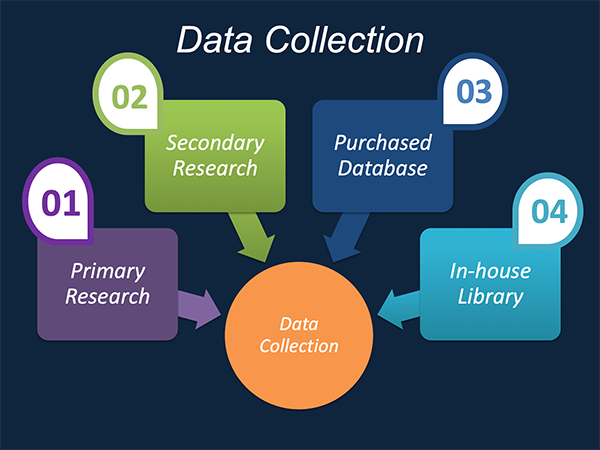
Data Synthesis: This stage includes the evaluation and assessment of all the data acquired from the primary and secondary research. It likewise includes in evaluating the information for any disparity watched while information gathering identified with the market. The data & information is gathered with consideration to the heterogeneity of sources. Scientific and statistical methods are implemented for synthesizing dissimilar information sets and provide the relevant data which is fundamental for formulating strategies. Our organization has broad involvement with information amalgamation where the information goes through different stages:


Market Formulation & Deduction: The last stage includes assigning the data & information in a suitable way in order to derive market size. Analyst reviews and domain based opinions based on holistic approach of market estimation combined with industry investigation additionally features a crucial role in this stage.
This stage includes with the finalization of the market size and numbers that we have gathered from primary and secondary research. With the data & information addition, we ensure that there is no gap in the market information. Market trend analysis is finished by our analysts by utilizing data extrapolation procedures, which give the most ideal figures to the market.
Data Validation: Validation is the most crucial step in the process. Validation & re-validation through scientifically designed technique and process that helps us finalize data-points to be used for final calculations. This stage also involves with the data triangulation process. Data triangulation generally implicates the cross validation and matching the data which has been collected from primary and secondary research methods.





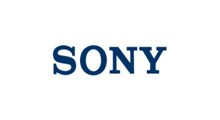

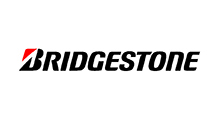

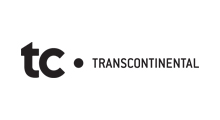















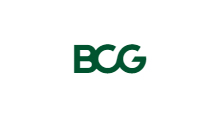


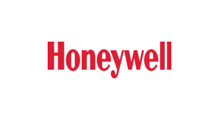

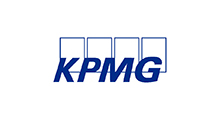
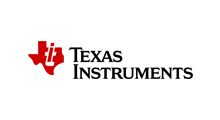



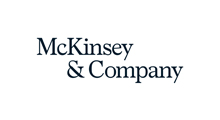

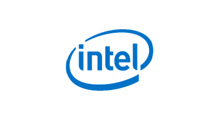







Free Customization
Countries can be added on demand
Free yearly update on purchase of Multi/Corporate User License
Companies served till date

We serve our customers 24x7 for 365 days through calls, emails and live chat options.
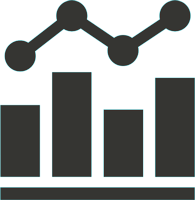
Huge database of exceptional market reports bringing market intelligence to your fingertips.

SSL enabled, we offer you various secured payment options for risk free purchase.